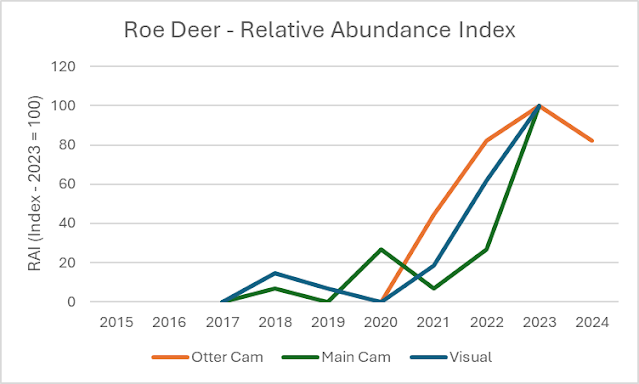The seasons create an ebb and flow of life. In late august we are currently in the midst of what I term the doldrums. Robins haven't quite begun to sing their autumn song but things are heading that way. The berries are starting to ripen and the number of bird species are falling.
It is during this time that the summer visitors leave Britain for warmer climates. For my patch the Whitethroats and Sedge Warblers have gone and the number of singing Chiffchaffs and Blackcaps have dropped to the odd one or two. Whereas in spring and during summer an hours visit to my patch would return a bird species list of between 25 and 30 I am now struggling to see more than 15. Those birds that do remain are starting to flock together. The fields have been harvested, tilled and ploughed which has attracted groups of up to 60 Jackdaws. Elsewhere the family of Long-tailed Tits have picked up some friends as juvenile Great Tits and Blue Tits have joined them. These mixed species flocks will grow throughout autumn and stay together as a loose group over winter.
At the same time the number of butterflies and dragonflies is starting to drop off and one might get quite dejected at the lack of things to watch but that is the beauty of nature and indeed of patchwork. There is always something to focus on. Out on my walk today I looked out for other invertebrates. The grasshoppers and crickets are still in abundance although today disappointingly I could only find Roesel's Bush Crickets. These are smart chunky crickets with a consistent churring call but seem to have come to dominate my patch. They are an indicator of climate change their colonisation of the UK from the continent is steadily moving northwards.Other than the orthoptera I looked for other insects to try and improve my species list. A small bug caught my eye. I took a snap and looked forward to identifying it later. My first guess was a Dock Bug, but cursory examinations of my books made me think twice. The antennae had two pale marks and the abdomen lacked the distinctive wind edges. So off to the net I went and after some research I found out that it was in fact a Dock Bug in its last instar. Instars are larval stages. The Dock bug 4 instars prior to its adult form. Like most insects they grow by shedding their skin periodically revealing a new form, this process is called ecdysis. The dock bug is not a rare species and I have probably seen it before on my patch but now I have recorded it and have a photo. What could have been a dull uninspiring day turned out to be an interesting one.










